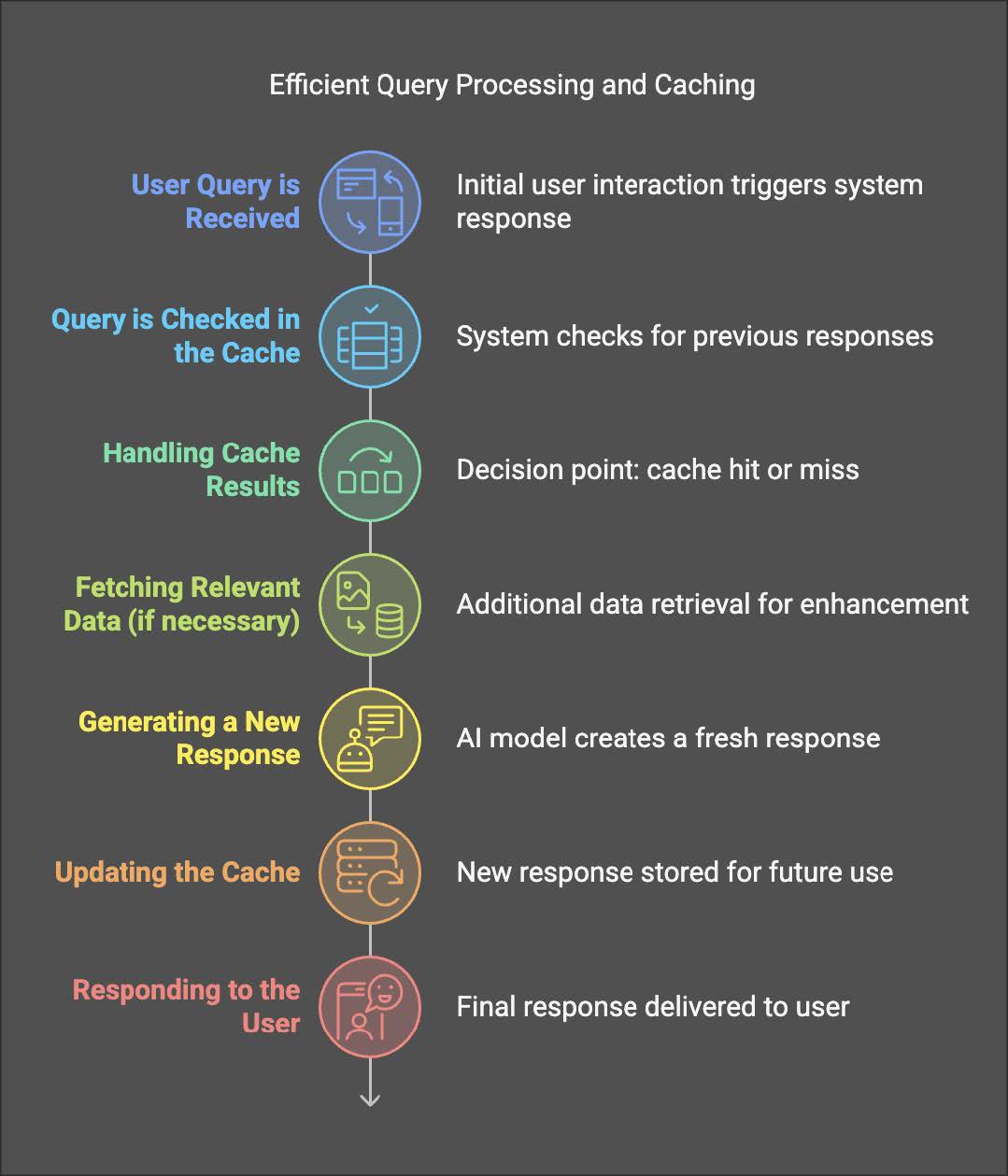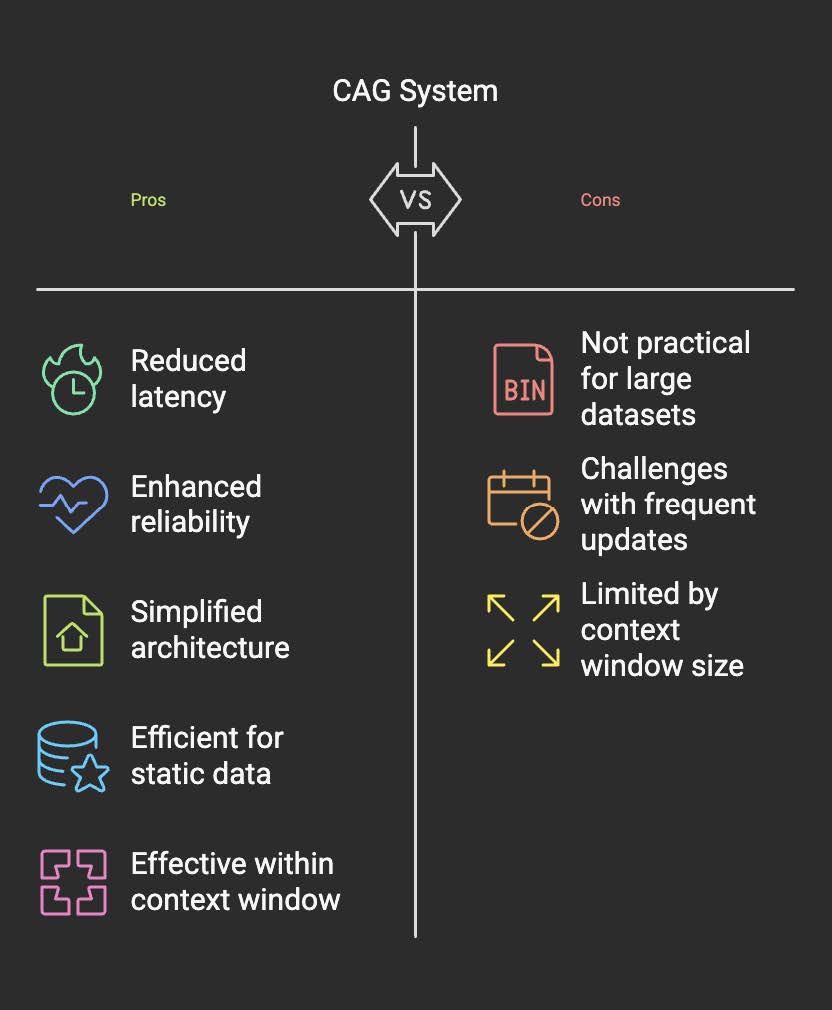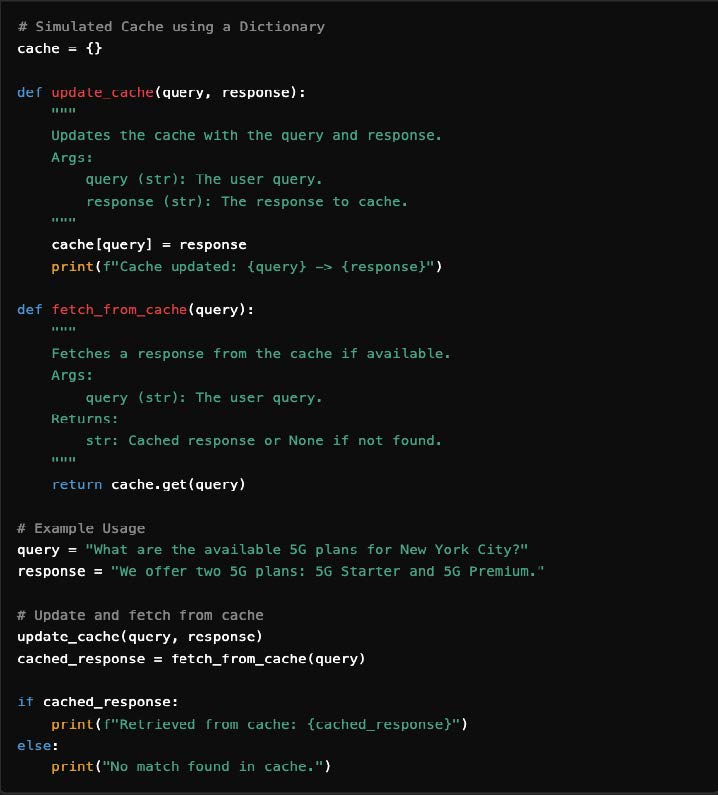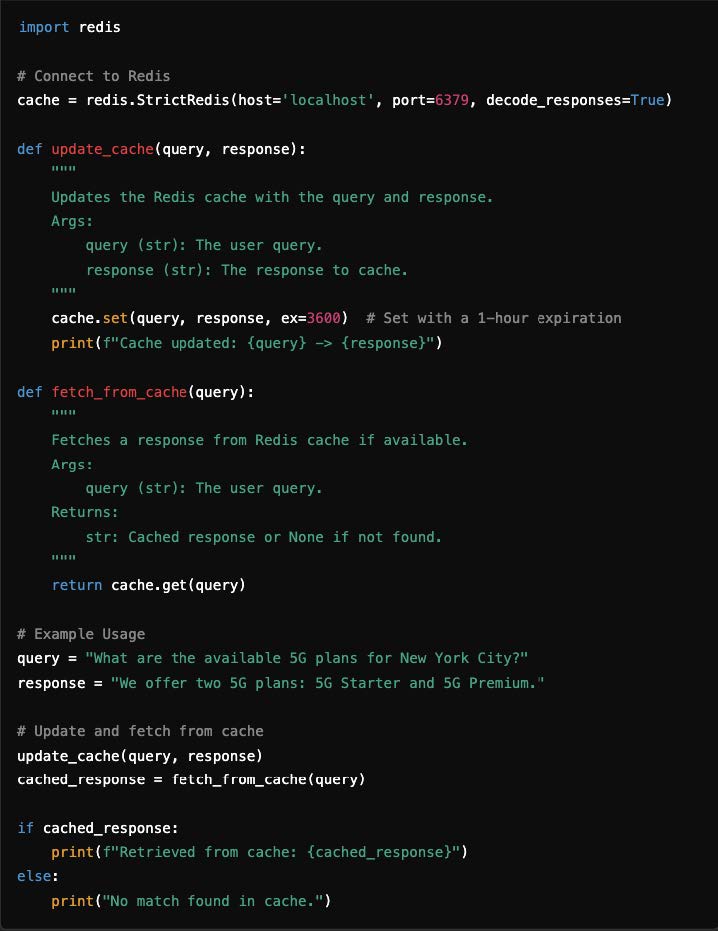About cookies on this site Our websites require some cookies to function properly (required). In addition, other cookies may be used with your consent to analyze site usage, improve the user experience and for advertising. For more information, please review your options. By visiting our website, you agree to our processing of information as described in IBM’sprivacy statement. To provide a smooth navigation, your cookie preferences will be shared across the IBM web domains listed here.
Article
CAG: Enhancing speed and efficiency in AI systems
CAG enhances traditional retrieval-augmented generation by using caching to improve speed, reduce costs, and optimize AI performance
On this page
Retrieval-Augmented Generation (RAG) is a key approach in modern natural language processing (NLP). It helps AI systems generate accurate and relevant responses by retrieving information from external sources.
However, as the demand for faster and more efficient AI grows, cache augmented generation (CAG) has emerged as an improved version of traditional RAG. It optimizes performance by storing frequently accessed data in a cache, reducing the need for repeated queries.
This article explores what CAG is, how it works, its benefits, limitations, and its potential impact on AI.
What is CAG?
CAG is an improved version of the traditional RAG model that uses caching to boost efficiency and reduce computational costs. It stores frequently accessed or previously retrieved data in a cache, allowing faster retrieval without repeatedly querying the external knowledge base.
This approach is especially useful for high-traffic applications where speed and cost efficiency are essential.
How CAG works
CAG improves efficiency by adding a caching layer to the traditional RAG model. Here's how it works:
- User query submission: The user submits a query, such as a question or request for information.
- Cache lookup: The system first checks if the required information is already stored in the cache.
- Cache hit: If the data is found in the cache, it is retrieved and used to generate a response, reducing query time and costs.
- Cache miss: If the data is not in the cache, the system fetches the relevant information from the external knowledge base.
- Cache update: The newly retrieved data is stored in the cache for future use, improving efficiency for similar queries.
- Response generation: The final response is delivered to the user, whether it comes from the cache or the external knowledge base.

Benefits of CAG
CAG enhances efficiency, reduces costs, and improves user experience in high-traffic applications:
- Faster responses: Cached data reduces retrieval time, enabling near-instant responses for common queries.
- Cost efficiency: Fewer queries to external sources lower operational costs, making it a budget-friendly solution.
- Scalability – Ideal for high-traffic applications such as chatbots, where speed and efficiency are crucial.
- Better user experience: Consistently fast responses improve user satisfaction in real-time applications.
Limitations of CAG
While CAG improves efficiency, it also comes with some challenges:
- Cache invalidation: Keeping cached data updated can be difficult, leading to potential inaccuracies.
- Storage overhead: Additional storage is needed to maintain the cache, increasing infrastructure costs.
- Limited dynamic updates: CAG may not always reflect the latest data changes in fast-changing environments.
- Implementation complexity: Developing an effective caching strategy requires careful planning and expertise.

Testing Cache with a simple dictionary
For small-scale applications or testing, a Python dictionary can be used as an in-memory cache.
Pros:
- Easy to implement and test
- No external dependencies
Cons:
- Not scalable for large datasets
- Cache resets when the application restarts
- Cannot be shared across distributed systems
- Not thread-safe for concurrent read/write operations

Best caching options for production
For production environments that require scalability, persistence, and concurrency, dedicated caching services are recommended.
Redis
Description: A fast, in-memory key-value store with support for persistence and distributed caching.
Advantages:
- Scalable and thread-safe
- Supports data expiration, eviction policies, and clustering
- Works well in distributed environments
Memcached
Description: A high-performance, in-memory caching system.
Advantages:
- Lightweight and easy to set up
- Ideal for caching simple key-value pairs
- Scalable for distributed systems
Cloud-based caching solutions
For scalable and managed caching, cloud-based services offer reliable options. A few popular choices follow:
AWS ElastiCache
- Supports both Redis and Memcached
- Scales automatically based on application demands
- Provides monitoring, backups, and replication
Azure Cache for Redis
- Fully managed caching service based on Redis
- Supports clustering, geo-replication, and integrated diagnostics for Azure applications
Google Cloud Memorystore
- Offers managed Redis and Memcached services
- Simplifies caching integration with other Google Cloud services
Using Redis for caching in production
Redis is a reliable choice for production-grade caching. Here's why it works well in the CAG workflow:

Advantages of Redis
- Persistence: Supports data persistence by saving cached data to disk.
- Scalability: Handles large-scale distributed applications efficiently.
- Flexibility: Supports various data structures like strings, hashes, lists, and sets.
Use cases for CAG
CAG is useful in various applications where speed and efficiency matter. Here are some key areas:
Customer support chatbots
- Instantly answers FAQs by retrieving cached responses.
- Example: An e-commerce chatbot can quickly provide shipping and return policy details.
E-Commerce platforms
- Retrieves product information, pricing, and availability instantly.
- Example: A user searching for a product gets immediate details without querying the full database.
Content recommendation systems
- Uses cached user preferences to provide personalized recommendations.
- Example: A streaming service suggests movies based on a user's watch history.
Enterprise knowledge management
- Streamlines access to internal documents and resources.
- Example: Employees can quickly retrieve company policies from the cache.
Educational platforms
- Provides quick answers to frequently asked student queries.
- Example: Online learning platforms instantly deliver course details or assignment deadlines.
When CAG may not be ideal
CAG is effective in many cases, but it may not be the best fit for every scenario. Here are some situations where it might not be suitable:
Highly dynamic data environments: When data changes frequently, such as in stock market analysis or real-time news, cached information may become outdated, leading to inaccurate responses.
Low-traffic applications: In systems with low query volumes, the overhead of caching may outweigh its benefits, making traditional RAG a better choice.
Confidential or sensitive data: In industries like healthcare or finance, caching sensitive data could pose security risks. Proper encryption and access controls are necessary.
Complex, one-time queries: If queries are highly specific or unlikely to be repeated, caching may not provide significant advantages and could add unnecessary complexity.
The future of CAG
CAG is set to evolve by overcoming its limitations and enhancing its strengths. Key developments may include:
- Smarter cache management: Advanced techniques like intelligent cache invalidation and adaptive caching will help keep data accurate and up-to-date.
- AI integration: Combining CAG with technologies like reinforcement learning could improve efficiency and scalability.
- Wider adoption: As AI systems advance, CAG will play an important role in delivering faster, more cost-effective solutions across various industries.
With its balance of speed, accuracy, and scalability, CAG is a valuable tool for businesses and developers looking to optimize AI-driven applications.
Conclusion
CAG enhances traditional retrieval-augmented generation by reducing latency and costs while maintaining accuracy. Though it has limitations, it is a powerful solution for high-traffic, real-time applications that demand speed and efficiency. As the technology evolves, CAG will play a key role in advancing AI, improving user experiences, and driving innovation across industries.